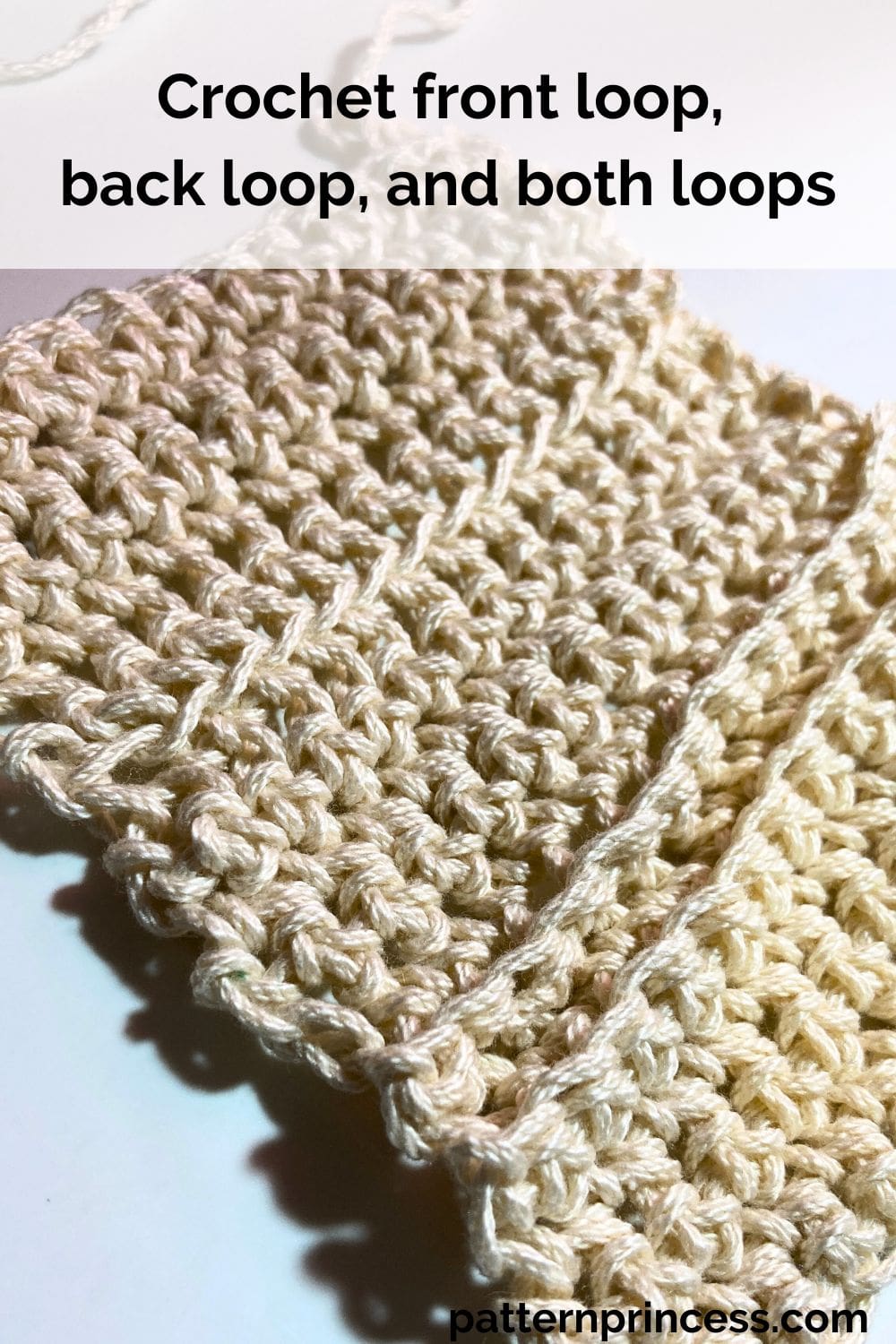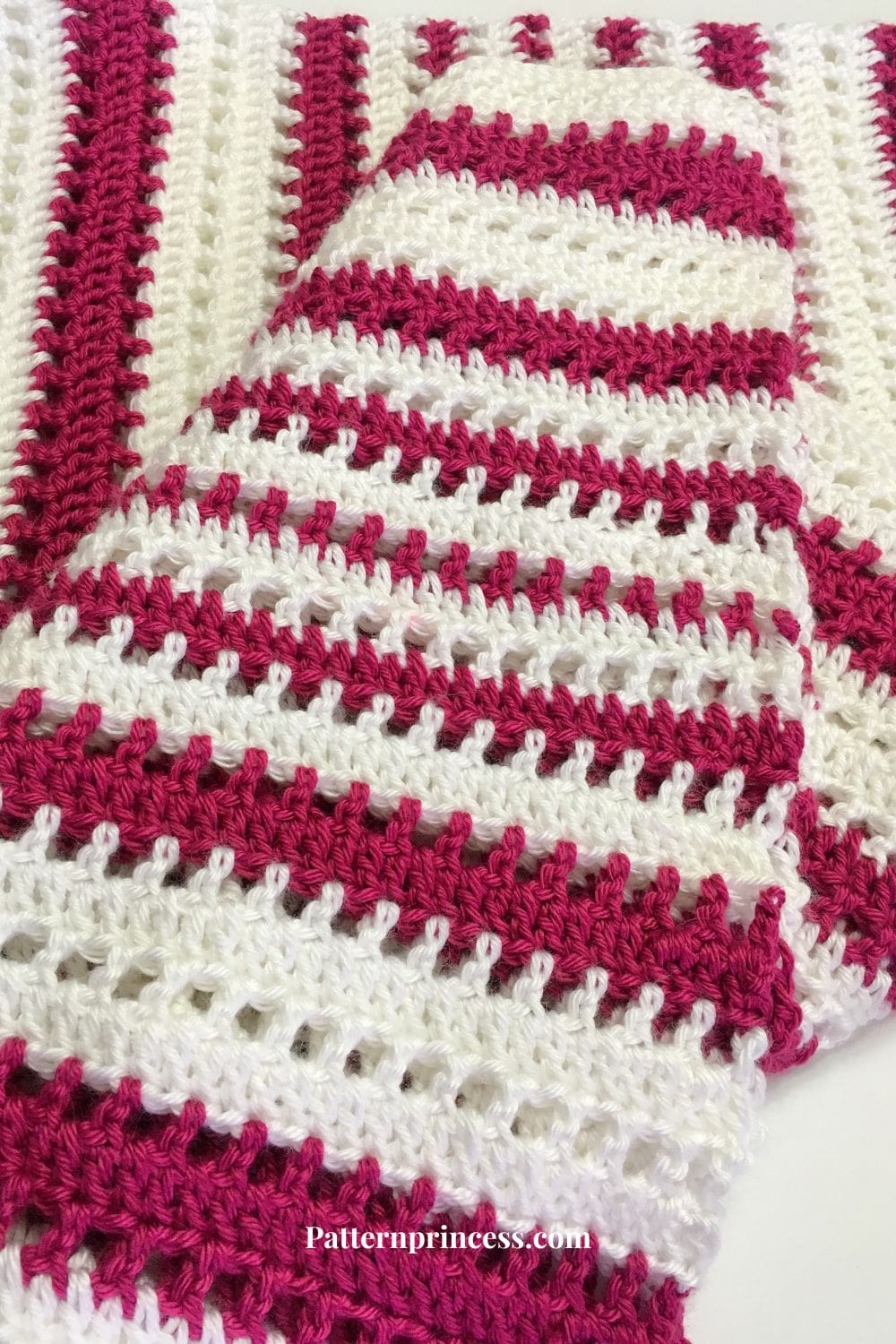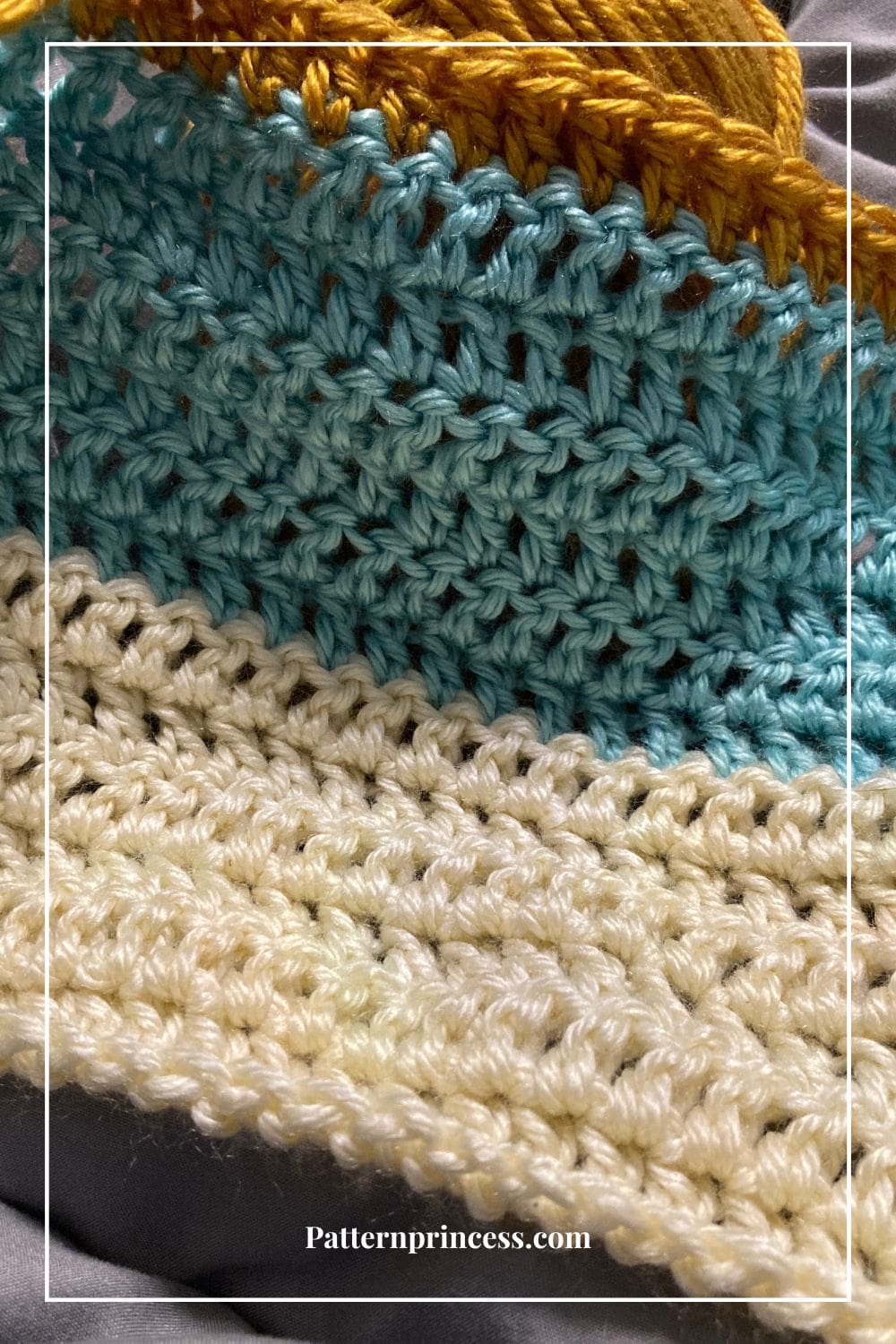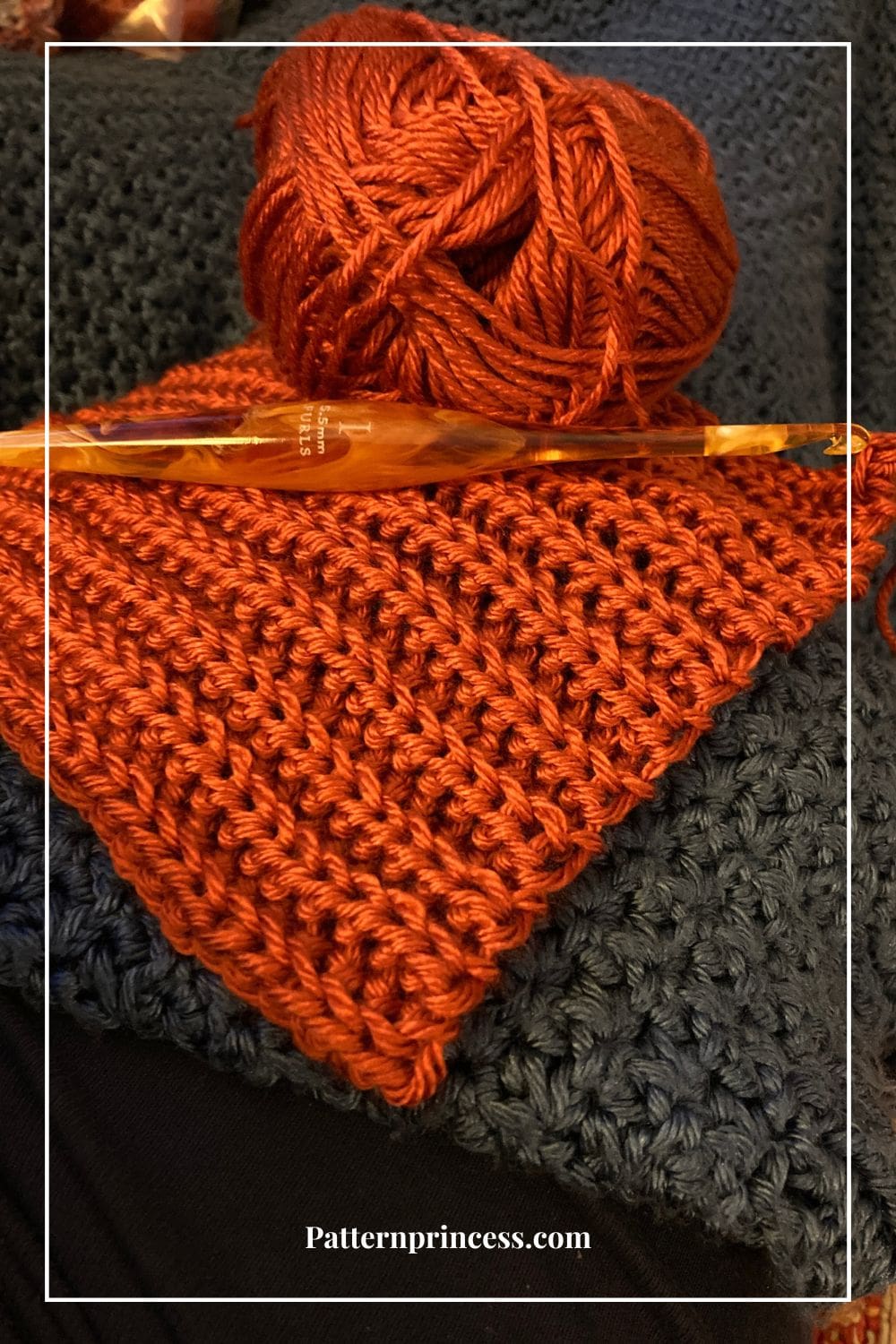When you dive into the world of crochet, understanding how to work into the front loop, back loop, and both loops of a stitch is an essential skill for creating unique textures and effects.
One of the key things to learn when you start crocheting is how to work with loops. They are important because play a crucial role in shaping the texture, appearance, and overall feel of your finished project.
Essential highlights
Crocheting through both loops is the default method, providing stability and structure to your fabric unless a pattern indicates otherwise.
Working in the front loop only creates texture and adds height, giving your fabric a distinctive and decorative appearance.
Using the back loop only enhances the stretchiness of your fabric, making it ideal for projects requiring flexibility.
Combining front and back loop techniques allows for unique patterns and adds versatility to your designs.
Specialty stitches, such as those used in amigurumi or ribbing, often rely on specific loop techniques to achieve their characteristic look and function.

Understanding Crochet: Front Loop, Back Loop, and Both Loops
This article will help you understand the differences between front loops, back loops, and both loops, and when to use each one.
Using Both Loops
The standard method in most basic stitches, like single crochet stitches or double crochet stitches. It involves working through both loops. This creates a crochet fabric with balanced tension and structure.
When to Use This Method
For strong, durable projects like bags or blankets.
When following crochet patterns designed to minimize unused loops.
The Anatomy of a Crochet Stitch
To master working with different loops, it’s helpful to understand the anatomy of a crochet stitch. At the top of the stitches, you’ll see two loops: the front loop (closer to you) and the back loop (further away). Sometimes, there’s even a third loop located on the back of the stitch. These loops can be manipulated in specific loops to create unique textures or patterns.

What does FLO and BLO Mean?
In crochet, FLO and BLO are abbreviations for two specific techniques.
FLO (Front Loop Only)
This means you work your stitch into the front loop of the stitch. The front loop is the loop of the stitch closest to you when looking at the top of the stitches.
Using FLO creates a distinct texture and often leaves the back loop visible on the side of the fabric, resulting in decorative horizontal lines or a more delicate look.
BLO (Back Loop Only)
This means you insert your hook into the back loop of the stitch. The back loop is the loop furthest from you when looking at the top loops of the stitch.
BLO is a common technique to create ribbed fabric, different textures, or added stretch in the fabric. It’s also frequently used in patterns like hats, cuffs, and amigurumi pieces.
Both techniques are great for adding different effects to your crochet projects and are a useful technique for creating unique textures and dimensions in your crochet fabric.

Working in the Front Loop (FLO)
When you insert your crochet hook under the closest loop only, you achieve what’s called front loop crochet. This technique creates a different appearance, often leaving the back loop as a decorative element on the side of the fabric. It’s a useful technique in patterns like ribbed fabric or designs requiring horizontal lines.
Reasons to Crochet in the Front Loop Only
Dimension and Depth
Working in the front loop of a stitch adds dimension and depth to your project. This technique can create layered or overlapping effects, giving your work a three-dimensional quality and a distinctive look.
Stitch Definition
Crocheting in the front loop highlights the individual stitches, enhancing their visibility and definition. This is particularly helpful for intricate stitch patterns or when you want to emphasize the details of a specific pattern.
Textured Fabric
Consistently working in the front loop results in a textured fabric with a unique surface. This technique adds visual and tactile interest, making it perfect for projects where these qualities are desired.
Working in the Back Loop (BLO)
The back loop crochet technique leaves the front loop unused, which can create a ribbed fabric or emphasize horizontal bars.
BLO stitches are popular in patterns requiring a stretchy fabric, like cuffs, or adding dimension to a crochet fabric.
Working into the back loops of stitches can also minimize larger gaps often found in regular crochet.

Reasons to Crochet in the Back Loop Only
Ribbing
Crocheting in the back loop is commonly used to create ribbing for hats, sleeve cuffs, sweater edgings, and similar projects. The back loop single crochet stitch is particularly effective for achieving this stretchy, textured effect.
Texture
If you want to add a ridge or some texture to a section of your crochet project, working in the back loop is an excellent technique. It provides a subtle yet noticeable raised detail.
Structure and Support
The ridges formed by working in the back loop add stability to the crochet fabric. This is especially useful for items like bags or baskets where a sturdier construction is needed, particularly around the base or edges.
Elasticity
Crocheting in the back loop leaves the front loops untouched, adding a slight stretchiness to the fabric. This makes it ideal for projects that need a bit of give, such as hats, cuffs, or garments.
Work Stitches the Same Way
Both the BLO and FLO stitches are worked in exactly the same way as regular crochet stitches. But as the names suggest you only use either the front or back loops to work them.
Pro Tip. For beginners, practice on a first swatch to see how working into the back loops changes the look of your piece of crochet.
Tips for Using These Techniques
Experiment with different loops to see how they affect the texture and stretch of your crochet work.
For crochet artists, understanding these techniques opens up a world of different effects for your designs.
Other Loops to Use for Crochet Stitches
Special Techniques, Other Loops to Use for Crochet Stitches and Their Effects
Working in the back bumps of the foundation chain. Used to create a cleaner edge for the first row of stitches. Lessens the gap that can show when crocheting in to the top loop of the foundation chain.
Third Loop Crochet. This technique works into the horizontal bar on the back of the stitch, creating texture on the right side of your work. Often found when using half double crochet stitches.
Video Tutorials
Follow video tutorial to ensure you’re inserting your hook into the correct part of the stitch.
Video Tutorial crocheting into the front loop, back loop, and both loops.
Where to Start
Start by exploring free patterns that incorporate these techniques. Try using them in particular patterns, like ribbing for garments or creating unique textures in blankets. As you practice, you’ll find specific reasons to choose one technique over another in a variety of ways.
Whether you’re crafting amigurumi pieces, a cozy blanket, or experimenting with new stitches, learning to work into specific loops is a skill that will enhance your ability as a crochet artist.
Next time you pick up your crochet hook, give these techniques a try and enjoy the different results they bring to your projects.

You can find Victoria crocheting, quilting, and creating recipes. She has cooked in restaurants for over 20 years, including many larger parties. She learned to crochet when she was just 11 years old and has been crocheting ever since; over 50 years now. Over 40 years ago, she loved her first class in sewing and continues to hone her skills in quilting. Many have enjoyed the handmade gifts over the years. In her professional career, she has worked in management in a wide variety of businesses including higher education as a dean of a division. All the while attending college part-time to achieve her doctorate in higher education with an emphasis in e-learning.
